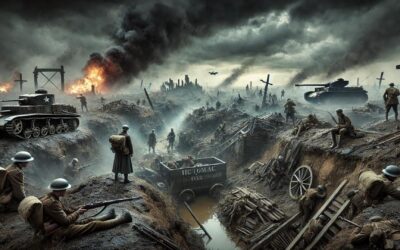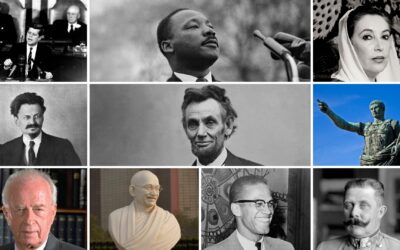The Silver Screen and the Iron Curtain: Cold War Echoes in Popular Culture and Media
The 20th century: an era of tensions, confrontations, and a plethora of untold stories, simmered amidst the scalding pot of the Cold War. But this was not just a tale of diplomatic cables and secret meetings. It was an era when art imitated life, and the Cold War found its way into the cinema halls, radio waves, and the vibrant palette of popular culture.
Lights, Camera, “The Enemy”!
During the Cold War, the world was painted in black and white. You were either with the US or the USSR, capitalist or communist, friend or foe. Films, books, music, and television did not shy away from this dichotomy.
In Hollywood, movies like “Red Dawn” depicted an invasion of the US by communist forces, playing on American fears and nationalist sentiments. Conversely, Soviet cinema churned out films such as “The Cranes are Flying”, subtly critiquing war and highlighting the costs of international tensions.
Books weren’t far behind. John le Carré’s “The Spy Who Came in from the Cold” delved into the murky world of espionage, reflecting the grey areas of the political spectrum. Music, too, picked up on these themes. The Beatles’ “Back in the USSR” may have had a catchy beat, but its lyrics and title spoke of a deeper political undercurrent.
The Puppets and the Puppeteers: Media’s Dual Role
Media during the Cold War was a dance of shadows and light. On one hand, there was state-sponsored media, with governments pulling the strings, ensuring that news, shows, and even music sung a certain tune.
Radio Free Europe, funded by the US, broadcasted programs to Soviet-controlled Eastern Europe, presenting the Western view. Similarly, the USSR’s Radio Moscow aimed its signals toward the West, extolling the virtues of communism.
However, independent media tried to carve a niche. Magazines, newspapers, and broadcast channels that weren’t directly under the state’s thumb often portrayed a more nuanced view of events, sometimes at great risk. They tread the fine line between censorship and truth, providing a glimpse into the complexities of the era.
The Art of Persuasion: Propaganda’s Vivid Colors
Few things captured the spirit of the Cold War like propaganda posters. Stark, vivid, and unambiguous, these posters were more than just art; they were tools of persuasion.
American posters showcased the “American Dream”, freedom, and the perceived threat from the “Reds”. The USSR, in response, painted America as an imperialist aggressor, while highlighting the strengths and unity of the communist bloc. These posters, found everywhere from schools to town squares, were constant reminders of the ideological battle being waged.
Radio wasn’t just for music. It was a battleground for hearts and minds. Radio campaigns often painted ‘the other side’ as aggressors, and speeches by leaders were broadcasted to inspire loyalty and resilience.
Of Beatles, Elton, and Political Harmonies
The Cold War wasn’t all grim. Culture, in its unique way, bridged gaps. The Beatles’ tour in the USSR was a testament to this. The band, symbolic of Western freedom and rebellious spirit, played in Moscow. Their music, transcending borders, echoed in the hearts of Russian youth, subtly blurring the rigid lines of the Cold War.
Similarly, when Elton John performed in the USSR, it was more than just a concert. It was a message – music, art, and culture are universal, regardless of political beliefs.
These cultural exchanges, though often laden with political undertones, were reminders that beneath the layers of politics, people, whether from the East or West, had shared dreams, hopes, and aspirations.
Epilogue: The Echoes That Remain
The Cold War ended, but its echoes remain. It’s evident in the movies we watch, the books we read, and the art we admire. This era, with all its tensions, also gave birth to some of the most poignant pieces of art and media.
These pieces serve as reminders – that even in times of division, art finds a way to unite, to comment, and to bridge. The Cold War, with its Iron Curtain, might have divided the globe, but popular culture and media, in their unique ways, wove a tapestry that intertwined the East and West, reminding us of the power of stories, songs, and visuals in shaping history.
Keywords:
- Iron Curtain: A term popularized by Winston Churchill to describe the ideological boundary separating the Western countries and the countries of the Eastern Bloc during the Cold War.
- Dichotomy: A division or contrast between two things that are represented as being opposed or entirely different.
- Espionage: The act of spying, especially a government spy obtaining secrets of another government.
- Murky: Dark and gloomy, especially due to thick mist or fog.
- Nationalist sentiments: Strong feelings of pride, loyalty, and protectiveness toward one’s country.
- Dichotomy: A division or distinction between two groups or things that are opposed or entirely different.
- Censorship: The suppression or prohibition of any parts of books, films, news, etc. that are considered obscene, politically unacceptable, or a threat to security.
- Imperialist: A person who supports or practices imperialism, which is a policy or ideology of extending a country’s rule over foreign nations.
- Aggressor: A person or country that attacks another first.
- Ideological: Based on or relating to a system of ideas and ideals, especially concerning economic or political theory and policy.
Key Takeaways:
- Popular culture and media played significant roles in portraying the Cold War’s tensions, especially through depictions of “the enemy”.
- Both the US and USSR used films, books, music, and television to highlight their perspectives and ideologies.
- State-sponsored media was prevalent, guiding the narrative to align with governmental views, while independent media provided a more balanced outlook.
- Propaganda, in the form of posters, radio broadcasts, and campaigns, was a powerful tool used by both superpowers.
- Cultural exchanges, like concerts of Western artists in the USSR, provided moments of unity amidst the political divide.
Check out the Story of the Cold War Article Series
Cold War Chronicles: From Superpower Showdowns to Silent Echoes (Featured Article)
The Nuclear Arms Race: An Era of Fear and Hope
CIA vs. KGB: The Hidden Wars of the Cold War Era
The Cold War’s Echo in Africa: Decolonization and Proxy Battles
The Non-Aligned Movement: Navigating the Cold War’s Tumultuous Seas
Echoes of the Cold War: Its Indelible Mark on Popular Culture & Media
Capitalism vs. Communism: The Economic Tug of War during the Cold War










0 Comments